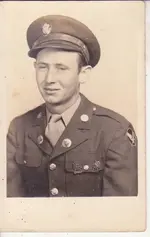oldbattleaxe
Sr. Member
This badge measures 1 5/8" across and made of brass. I can find similar sabers but not a disc of this size. What time frame was this used for forum?
20th century U.S. collar disks have never been this large. The lack of hangers on the sheaths, along with the enamel on the sword, makes me question if it it’s even military.
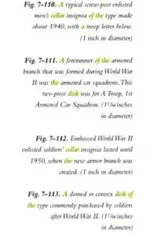
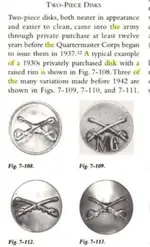
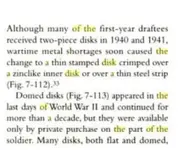
I feel like we have beaten this thing to death lol, in all honesty have u looked to see if the swords could have been mounted on there, meaning trench art.They were privately purchased. As were a lot of items. There was proof of cavalry soldiers wearing yellow ribbons across their insignias, and it wasn’t permitted, but they did it anyway. I’ve researched, and spoke to many different sources, and included many different examples all of which resemble that one to a T. Get a digital caliper a measure it. The book on all badges used during the First World War, and Second were in this book with references. It’s a concave screw on type. Whatever size it is, it was bought after the war ended by many soldiers.
I guess I will leave it as unsolved. I am quite sure this badge has not been modified. A friend dug this item at the Barberton Ohio encampment area that was used for Span Am and WW1 soldiers. It could be a special order badge? I don't think I have ever seen a soldiers hat badge that was enameled. One spec of red on the saber guard. I thank all of you for showing your interest and help with it. Bill
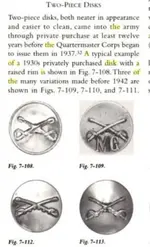
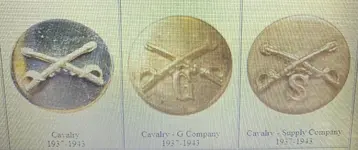
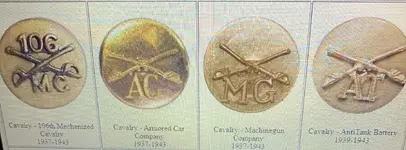
I've been saying that since the beginning that its 2 different pieces probably put together. But guess what guys he got what he wanted his thread to be alive again.Ok, Here's what I think is going on here.. At 1 5/8ths the disk is too big to have been a collar device, but just the right size for a WW2 and later Enlisted cap badge. Is there a small hole through it off of center? If so that is what it is. I think a screwback WW2 era Cavalry Officers collar sabres were added to it by someone wanting to make their own cap badge. I'm almost certain that's what we're looking at.
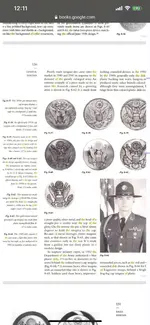
View attachment 1786948
During WW2 the shortage of brass, and enormous amount of troops enlisted made the US go to a pot metal disc for some time. The soldiers often bought their own badges, from private firms, do to the dislike of the cap badges of the time. I can find no design from the early 1920’s to the end of WW2 with 1 5/8 as a size for a cap badge. Some not even close. If the theory of drilling a hole into the button to fit Calvary sabers is correct then we know a square won’t fit in a round hole. The design of the two piece button along with the area of the square hole suggests it’s a variant of a collar disc. The argument being well they weren’t that big, look at the various examples of hat badges vs collar discs over the years, and the argument becomes invalid. I’m the time of WW2 there was such a shortage of brass that the military made some ugly buttons, cap badges, collar discs, because of the need to save brass for war needs, and the growing number of enlisted officers, also another key part is the government had come up with so many different units the cost of using all the brass was enormous. So the only valid reasoning here is it can only be a private purchased collar disc. I don’t care about the size. Because it’s not far off some of the standard collar discs, if it was privately purchased it could have been any size, as long as it was close enough to match the needs of a soldier and his uniform they would buy them. People tend to forget just how few brass hat badges, and collar discs there were back in WW2, due to all of the war efforts, and demand for brass, and copper going to munitions.
